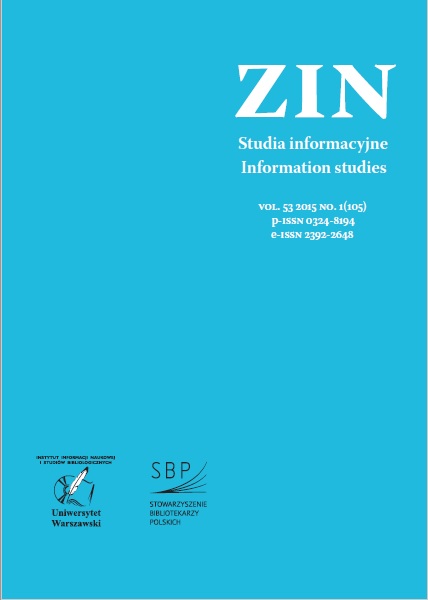Web Usability Evaluation Based on Eye Tracking. Case Study of Lithuanian National Museum Website
Web Usability Evaluation Based on Eye Tracking. Case Study of Lithuanian National Museum Website
Author(s): Andrius Šuminas, Arūnas GudinavičiusSubject(s): Library and Information Science
Published by: Wydawnictwa Uniwersytetu Warszawskiego
Keywords: Web usability; Eye Tracking; Musum websites; Information needs
Summary/Abstract: PURPOSE/THESIS: The aim of the research paper is to outline web usability evaluation based on eye tracking and to determine the usability of the website of the National Museum - Pałace of the Grand Dukes of Lithuania from the user perspective in the process of searching for the most required Information. APPROACH/METHODS: A literature analysis was used to get acquainted with usability evaluation methods and the historical review of visual attention studies, Questionnaire based interviews with visitors of the museums were used to collect Information about people Information needs and searching patterns on museum websites. In order to evaluate the website of the National Museum - Palace of the Grand Dukes of Lithuania the researchers used eye tracking equipment. RESULTS AND CONCLUSIONS: The eye tracking have recently gained attention in different research areas, however issues of museum website design and usability research using eye tracking techniąues and methods have not been widely discussed in scientific literature so far. The research on the Information needs of the visitors of Lithuanian museum websites revealed the most required Information: opening hours, museum location, entrance ticket price and Information about exhibitions. The results confirmed the assumption that people used museum websites as a primary tool to prepare for a visit at the physical museum. The eye tracking analysis of the website of the National Museum - Palace of the Grand Dukes of Lithuania revealed the typical mistakes and errors made in Information placement. When the Information most needed by the users is placed in different parts and levels of the website, the visitors have to spend more time and effort to find the Information and to prepare for a visit at the museum. ORIGINALITY/VALUE: Issues of the museum websites design are not widely discussed in worldwide scientific literature. There are no data about eye tracker based research on museum websites done in Lithuania before. The analysis results may contribute to new knowledge about designing successful interfaces for museum websites. Moreover, the results could be used in a broader field to improve the interfaces and Information representation for websites in general.
Journal: Zagadnienia Informacji Naukowej – Studia Informacyjne
- Issue Year: 53/2015
- Issue No: 1 (105)
- Page Range: 96-112
- Page Count: 17
- Language: English

